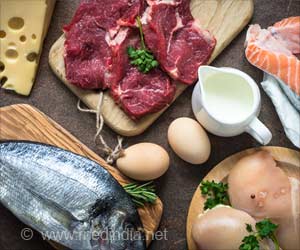According to professor William Helferich, soy products may be healthy additions to a person’s diet, and safe alternatives to hormone-replacement therapy, or even cancer-causing agents.
According to University of Illinois food science and human nutrition professor William Helferich, soy products may be healthy additions to a person’s diet, and safe alternatives to hormone-replacement therapy, or even cancer-causing agents.
Helferich has spent a decade evaluating the health effects of isoflavones, a class of plant estrogens present in high concentrations in soy. Much of his work has focused on a single isoflavone, genistein, which occurs in varying concentrations in soy products or ingredients such as tofu, soy protein isolates, soy flour and some estrogenic dietary supplements.Genistein is of interest because it is the most active of the soy isoflavones, and because it activates estrogen receptors in cells, including some breast tumour cells.
Dozens of studies of the role of human and plant estrogens in breast cancer have yielded seemingly contradictory findings. Some found that feeding genistein to female rats prior to puberty reduced the number of chemically induced mammary tumors. Other studies showed that estradiol, a primary human estrogen, spurs the growth of existing estrogen-dependent breast tumors.
Helferich and colleagues demonstrated that – like estradiol – dietary genistein stimulates the growth of estrogen-responsive tumors. They also found that dietary genistein interferes with treatments, such as tamoxifen, that target estrogen receptors in breast tumors. (About 70 percent of women with breast cancer have estrogen-responsive tumors.)
“The resolution of this paradox may lie in the timing of estrogen administration,” Helferich said.
Exposure to an estrogen, genistein, before puberty causes mammary gland differentiation.
Advertisement
“However, if the estrogen is administered to an animal after the development of an estrogen-responsive tumor, the growth of this tumor will be stimulated,” he said.
Advertisement
Helferich is evaluating the biological activity of some of these products, which are available in many forms, do not require a prescription, and in most cases are consumed without the knowledge of their physicians.
Helferich notes that the incidence rate of breast cancer in women aged 50 and over in the U.S. dropped significantly after use of hormone-replacement therapy (HRT) declined in 2002 and 2003.
While purified genistein is not as potent as HRT, Helferich said, it still poses a risk to midlife women because the amount consumed is much higher. The labels of many products that contain this and other isoflavones lack vital information about what is actually in their products, he said, and because these are natural products, the consistency from batch to batch is difficult to control.
“Women are participating in an ongoing experiment with an unknown outcome. You can’t identify what dose of isoflavones you’re getting,” he said.
But genistein is only one component of soy, Helferich said, and studying its effects in purified form may lead to misleading conclusions about the health consequences of soy in the diet. In fact, studies have shown that foods like soy flour have a very different effect.
“The complex mixture found in soy flour doesn’t make the tumor grow,” Helferich said.
“Whole soy contains a lot of biologically active ingredients, but together they may have multiple effects that can reduce the negative outcomes. When the whole food is consumed you get a very different effect than if you consume the concentrated constituents individually.”
All this research points to a very simple truth, Helferich said that the whole soybean is healthier than many of its individual chemical parts.
“That raw food can be consumed for less than a dollar a serving and is likely better for you than that thing you pick up at the health food store for 30 dollars a pound,” he said.
Source-ANI
SRM/B











